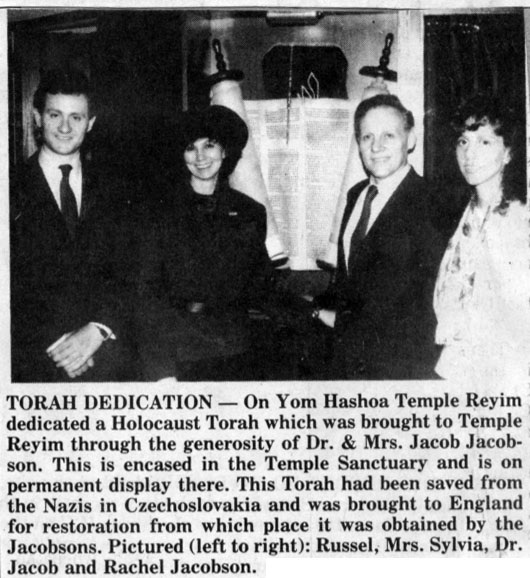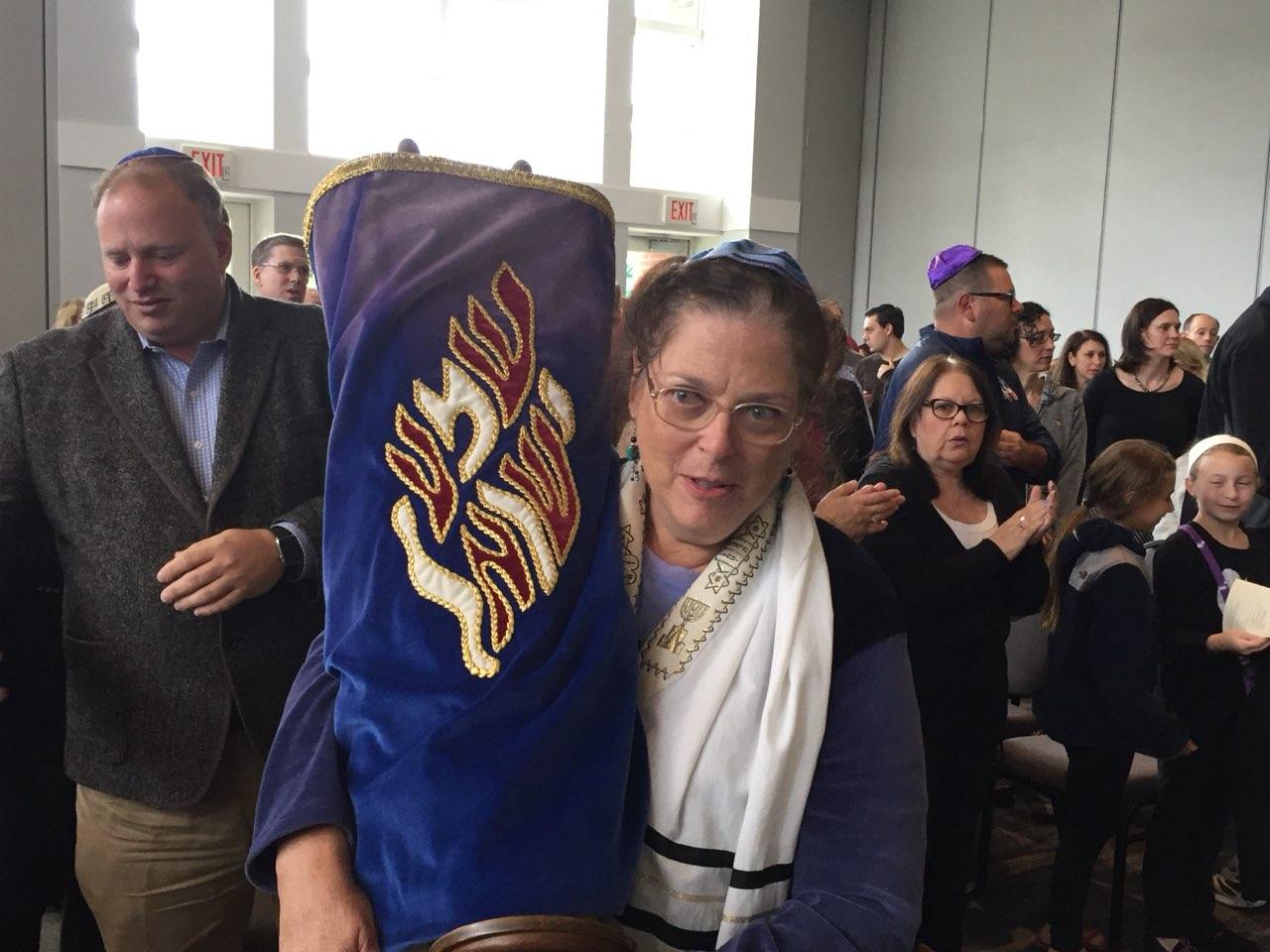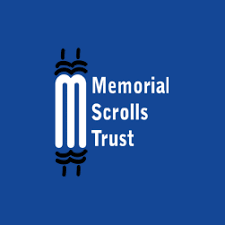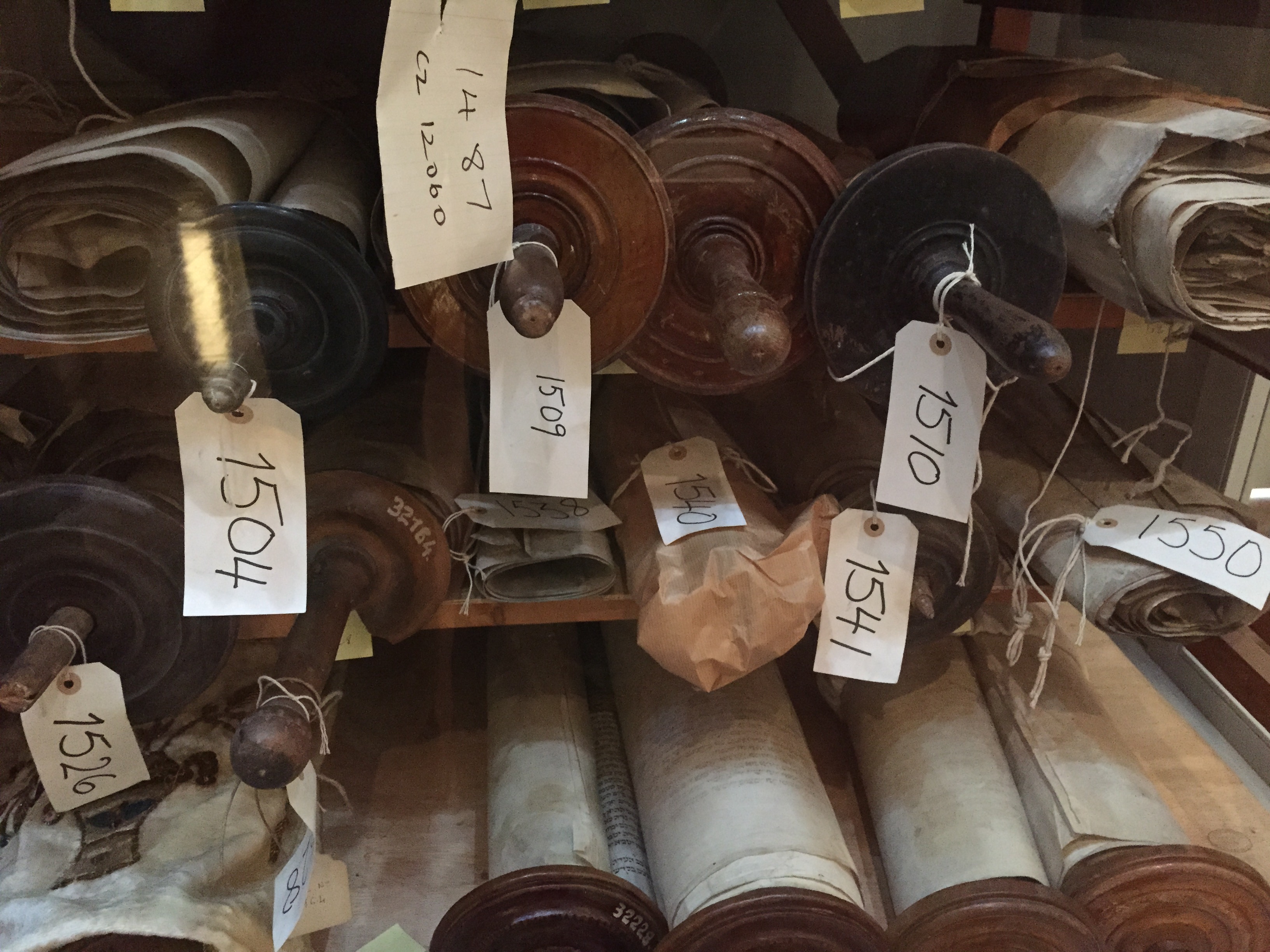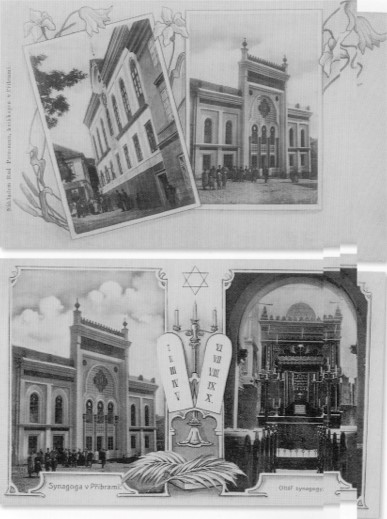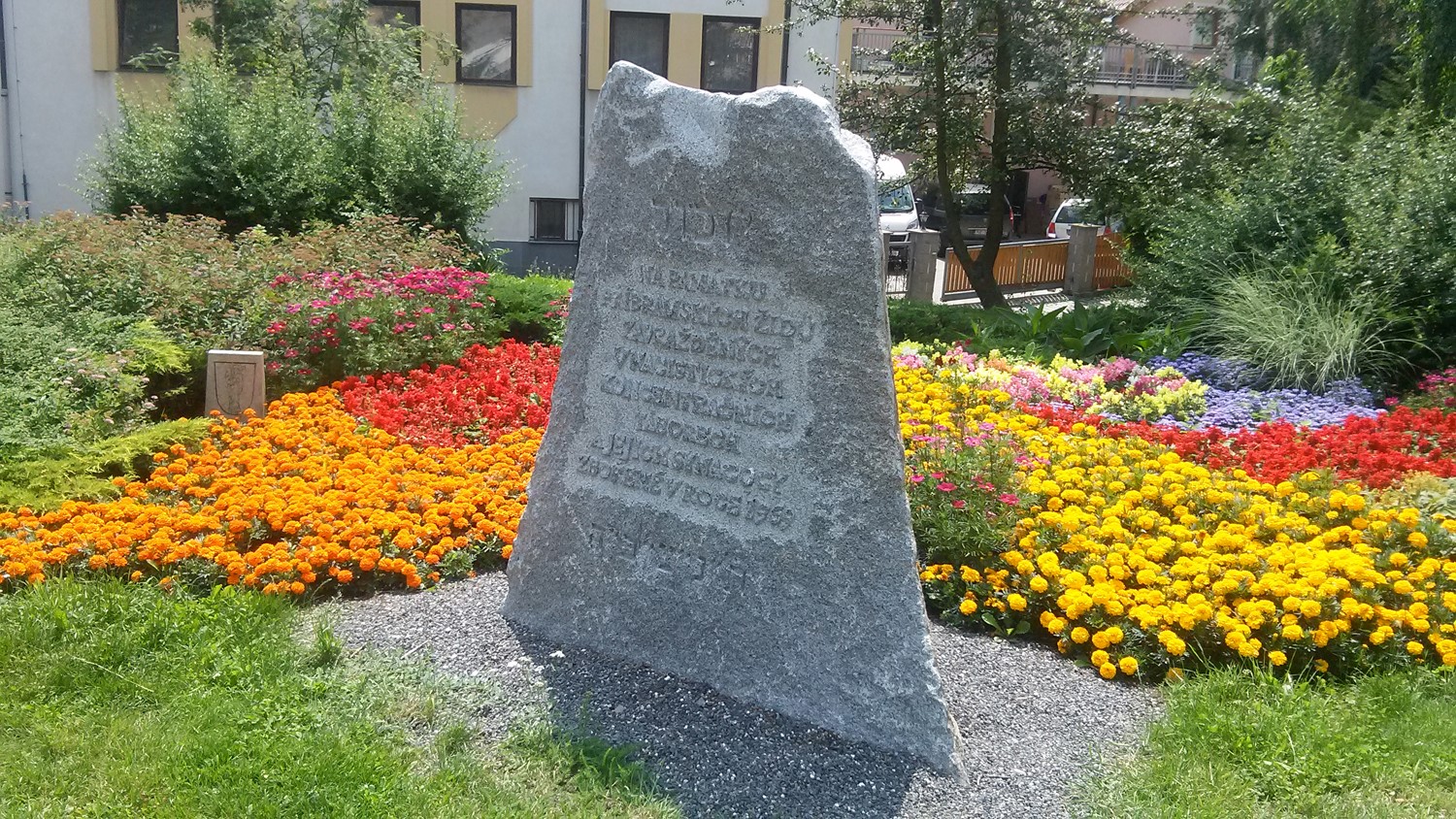Our Holocaust Memorial Scroll
Temple Reyim is the home of Memorial Scrolls Trust Torah #1235 from Příbram, Bohemia, in what is now the Czech Republic. It is housed in a special case that has a place of honor in our sanctuary.
The scroll came to us through the efforts of our members Sylvia and Jack Jacobson. It was dedicated in a moving ceremony on Yom Hashoah in 1987 that included an address by Holocaust survivor Jacob Birnbaum, remarks by Rabbi Phillip Kieval, and musical selections by Cantor Marty Robbins and the children of the religious school.
In 2007, we pursued the history of the scroll as we prepared to host an exhibit from the Jewish Museum in Prague, Neighbors Who Disappeared. We learned that it was one of several scrolls from the synagogue in Příbram, about 33 miles southwest of Prague. One of our volunteer docents for the exhibit was Edgar Krasa, a Holocaust survivor from Czechoslovakia. Amazingly, Mr. Krasa had a direct connection to Příbram. As a boy he had often visited his uncle there. Perhaps his uncle had celebrated his bar mitzvah by reading from our scroll.
In 2015, Temple Reyim member Linda Rakoff was proud to carry the Torah at a gathering of Czech scrolls at Temple Sinai of Sharon, Massachusetts. With this web page we honor her memory.
This scroll represents our commitment to remember the Shoah, the Jewish community of Příbram, and all of our people who were lost. While it is not kosher for communal worship, it is an enduring reminder of the centrality of Torah in our lives.
Memorial Scrolls Trust Collection
The scrolls owned by the Memorial Scrolls Trust were saved from the Jewish communities of Bohemia and Moravia.
Jews have lived in Bohemia and Moravia for more than a thousand years, and by the early 20th century they were well integrated into their communities.
Conditions changed, of course, with the German occupation of Czechoslovakia In 1939. In September 1941 the Nazis banned the holding of Jewish services and in December 1941 the Jewish Museum in Prague became a storehouse for items taken from the empty Prague synagogues.
Members of Prague’s Jewish community persuaded the Nazis to allow them to bring scrolls and other religious treasures from the now deserted communities of Bohemia and Moravia to the comparative safety of Prague. More than 212,000 artifacts were brought to the Museum, including about 1,800 Torah scrolls.
At the time of a 1930 census, there had been 117,551 Jews in Bohemia and Moravia. By 1943 some 26,000 had managed to emigrate. Most of the remaining Jews were sent to Theresienstadt, and were either murdered there or deported to other camps. Approximately 10,000 survived the camps.
Approximately fifty Jewish congregations were reestablished in post-war Czechoslovakia. When Communists took over the government of the country in 1948, Jewish communal life was again repressed, and most synagogues were closed. Their possessions went to the newly refounded Jewish Museum of Prague. The scrolls were warehoused in a ruined synagogue outside Prague.
In 1963 a company run by the Czech Communist government offered a London-based art dealer the opportunity to buy the scrolls. He approached a client, Ralph Yablon, who discussed the situation with the rabbi of the Westminster Synagogue. Yablon generously agreed to fund the purchase of 1564 scrolls, which arrived in London in February 1964.
Following the establishment of the Memorial Scrolls Trust, the scrolls have been allocated on loan to more than 1000 communities and organizations around the world. The scrolls are never sold or donated. The full story of how the scrolls came to London can be found in the book 1564 Scrolls: A Legacy of Jewish Life in Bohemia and Moravia.
The Jewish Community of Příbram
Příbram, a Bohemian town 33 miles southwest of Prague, was first noted as a village in the 13th century and designated a Royal Mining town in 1534. Jews first settled there before 1300 and disappeared in the 15th century. Modern Jewish settlement began in 1853. In 1858 a house of prayer and religious school were established. The community supported rabbis, cantors, teachers, mohels, and eventually had a society to aid the poor, a burial society, a ladies’ charitable society, a youth association, and even a kosher pub. The Jewish population peaked in 1890 with 412 Jews but shrank to 235 by 1930. Around 2016 the town had about 25,000+ residents with 10 Jews.
An imposing Moorish-style synagogue was built in 1874-1875. During World War II it was used as a warehouse, and from 1946 to 1957 it housed collections of the town museum. In 1966, due to the very small number of Jews in Příbram, the congregation transferred the synagogue to the town of Příbram. It was torn down in 1969.
A Conservative-Progressive/Reform cemetery was dedicated outside the city in 1879. The graves range from 1880 to the 20th century. In 1954 a memorial to 543 victims of Nazi persecution was unveiled. Czech Jewish groups did restoration in 1980 and 1992, and arranged for locked gates and a caretaker.
In 2018 Temple Reyim members Bryon and Linda Rakoff visited the cemetery. It was peaceful and well maintained, with some toppled gravestones. Most of the graves were numbered on the back with paint or chalk, believed to reflect the efforts of some groups to record data on the cemetery.
Sources
- https://memorialscrollstrust.org
- https://c.jewishmuseum.cz/files/documents/archiv-sbirky-a-fondy/Rejstrik_zidovskych_obci/Pribram.pdf
- http://iajgscemetery.org/eastern-europe/czech-republic/pribram
- Memorial Scrolls Trust
- National Archives of the Czech Republic
- Judy Mannaberg-Goldman
- Temple Reyim Archives
